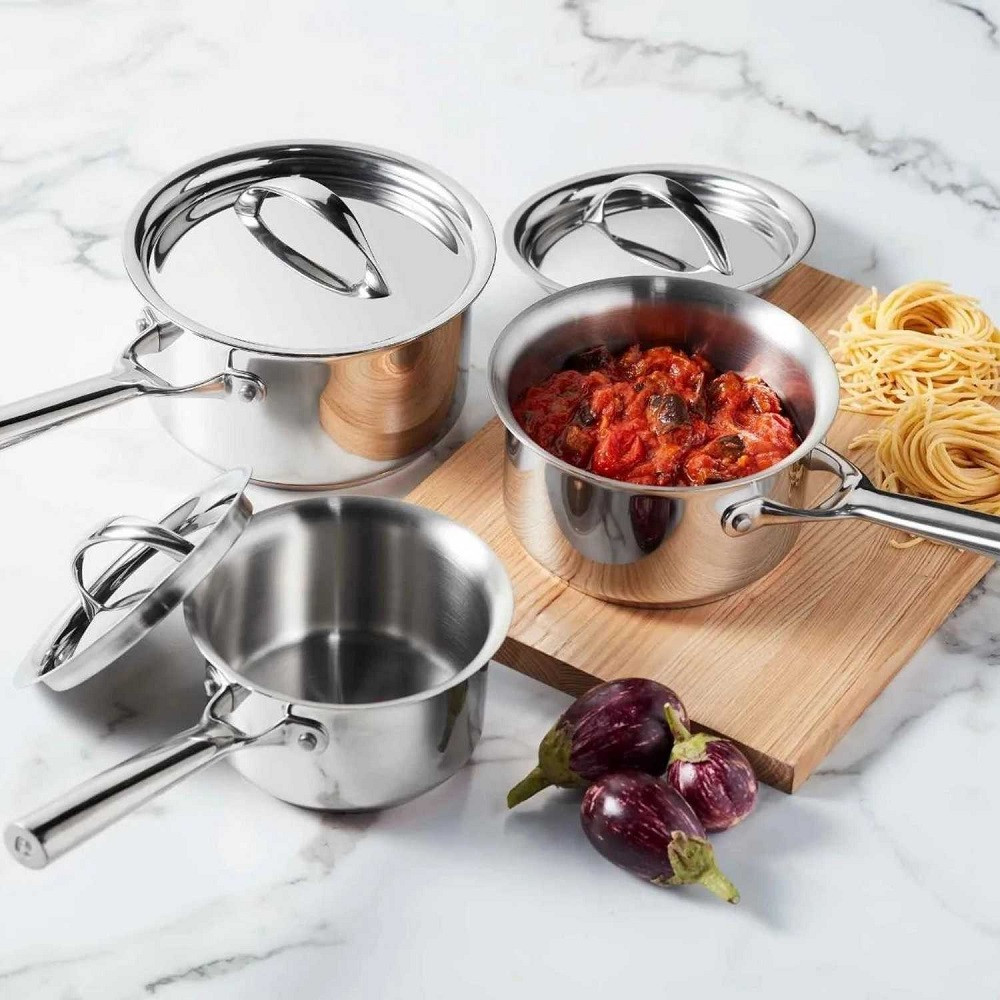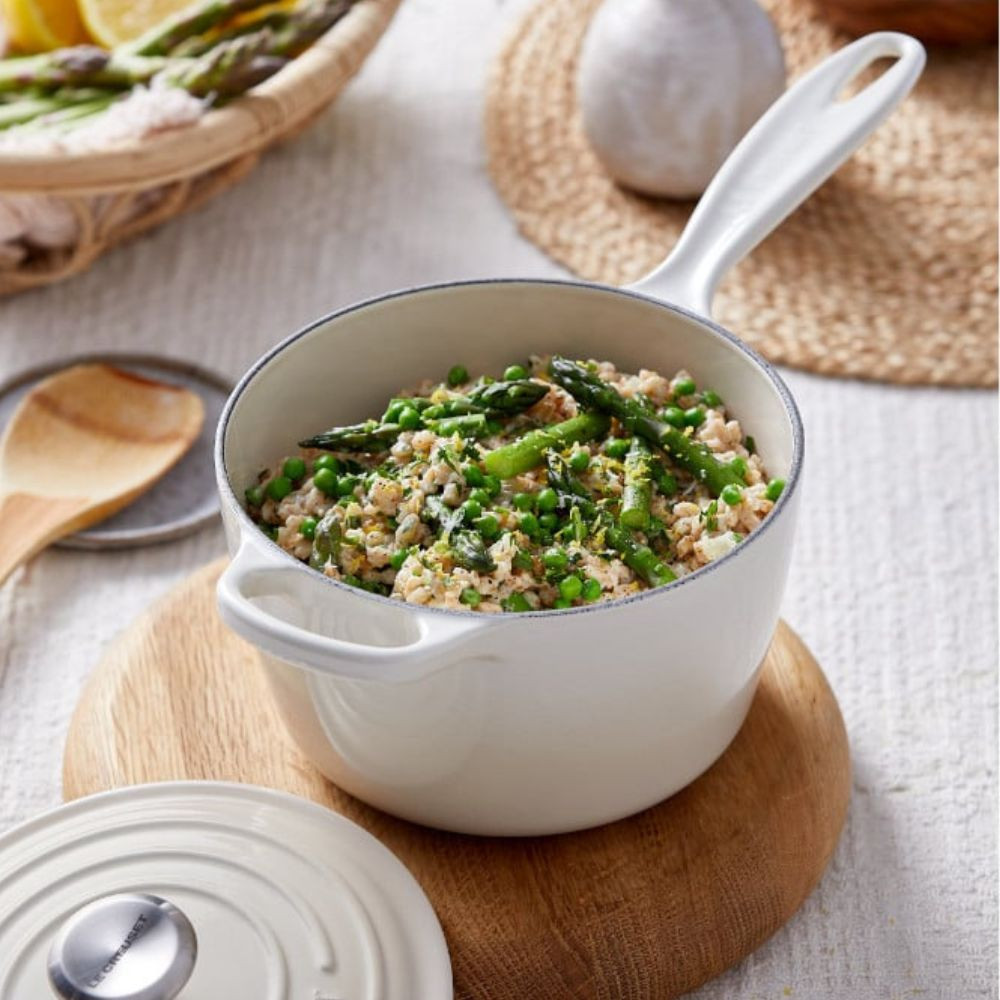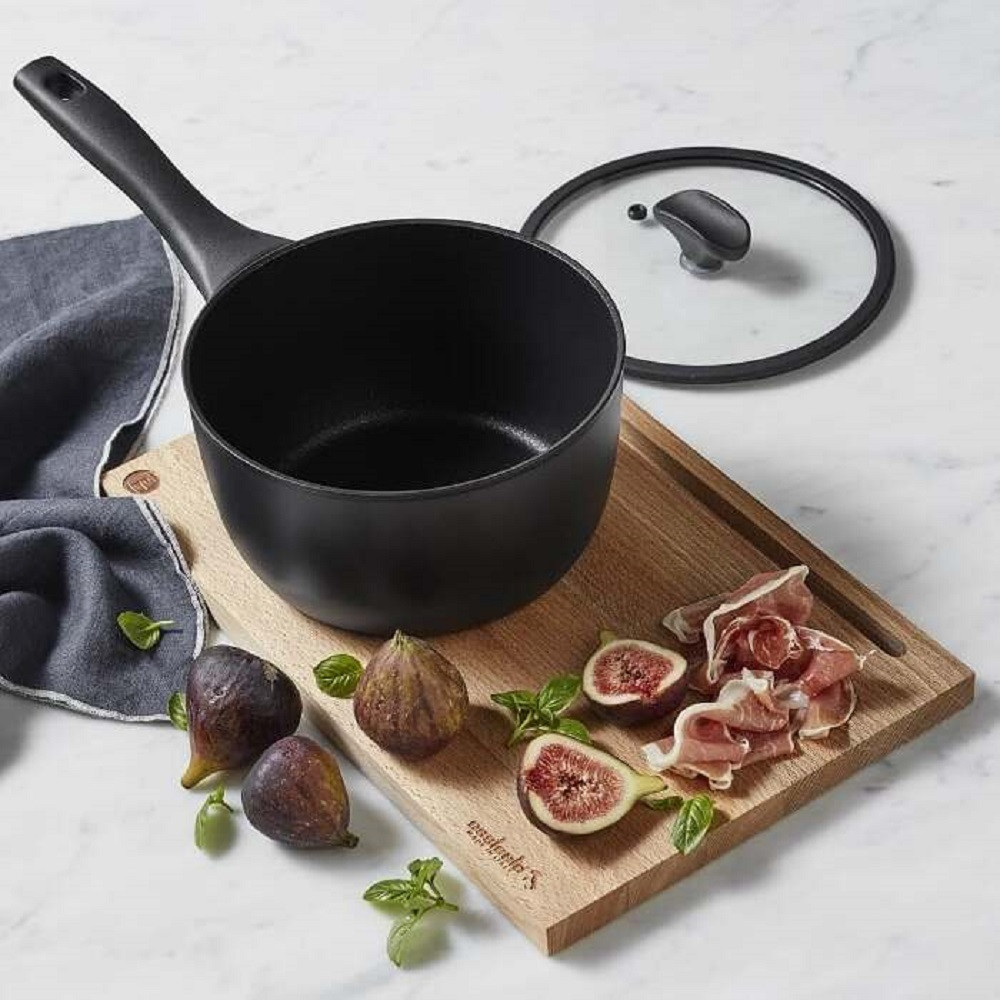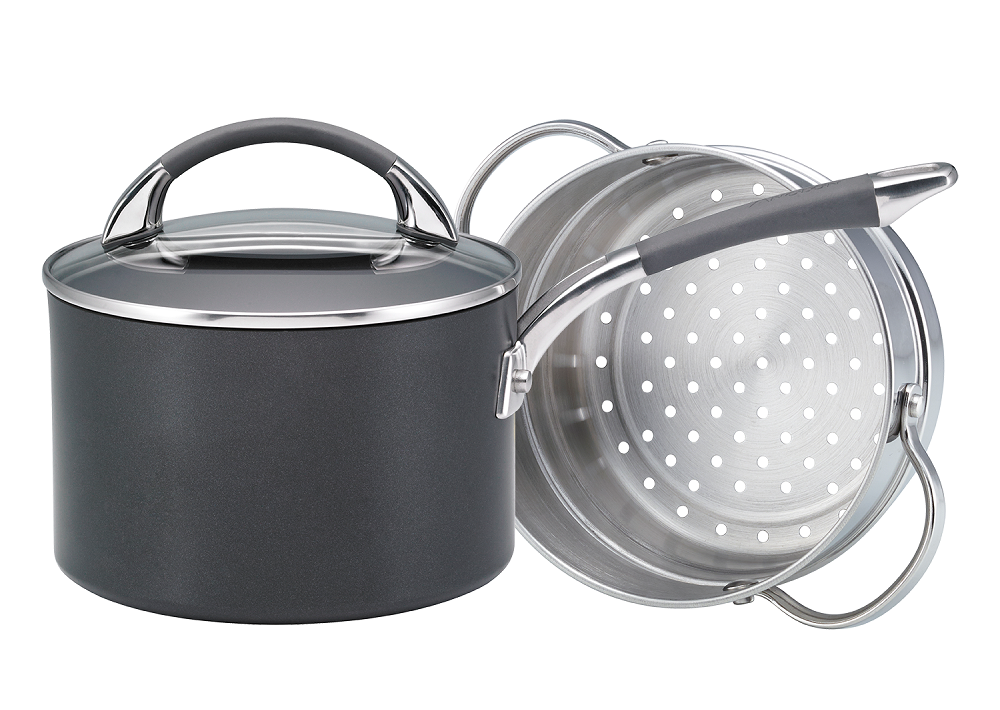
Whether you're an experienced chef or an aspiring home cook, this unassuming kitchen is essential in every cookware arsenal. From simmering savoury sauces to boiling vibrant vegetables, a saucepans versatility knows no bounds. Get ready to sauté, stew, steam, and more as we explore what makes saucepans indispensable in any kitchen!
What is a saucepan?
What is a saucepan, you ask? A saucepan is a small, deep cooking vessel with high sides and a long handle. The saucepan excels at tasks that require controlled heat, such as simmering delicate sauces or melting butter without scorching it. Coupled with a tight-fitting lid, the saucepan also helps retain moisture and flavours while enhancing the efficiency of the cooking process. So whether you're whipping up creamy custards or preparing velvety risottos, a trusty saucepan will be your loyal companion in the kitchen!
Most common saucepan sizes
This kitchen workhorse comes in various sizes, typically ranging from 950ml to 4L in capacity.
Smaller pans: also known as milkpans, are ideal for tasks that require delicate heating, such as melting butter, warming milk, making sauces, or reheating leftovers. One of our favourite milkpans is from Falcon Enamelware and is an excellent option for compact kitchens.
Medium saucepans: are versatile and can be used for boiling water, cooking grains like rice or quinoa, making small batches of soup, or reheating leftovers.
Larger saucepans: great for preparing larger quantities of liquids or dishes, such as soups, stews, and rice and can also be used for blanching vegetables or making stocks.
Popular saucepan materials
Saucepans can be made from materials like stainless steel or copper and offer durability and versatility. Some even feature non-stick coatings for easy cleanup.
Stainless Steel Saucepan
Known for their durability and heat conductivity, stainless steel saucepans are a popular choice. They are resistant to rust and staining, making them easy to clean. If you're looking for durable stainless steel saucepans that look great in your kitchen, then the Chasseur Maison Saucepan is perfect.
Copper Saucepan
With their excellent heat conduction properties, copper saucepans provide precise cooking temperature control. They are often lined with stainless steel or aluminum to prevent potential reactions between acidic foods and copper. One of our favourite ranges is the Per Vita by Essteele.
Cast Iron Saucepan
These heavy-duty saucepans distribute heat evenly and retain it well, making them great for slow-cooking stews or braising meats. They also add a unique flavour profile to the dishes cooked in them. One of our top-selling cast iron saucepans is the Signature Cast Iron Saucepan from Le Creuset.
Non-Stick Saucepan
These saucepans have a special coating that prevents food from sticking, making them ideal for delicate dishes like custards or sauces. The 9X Tougher Non-Stick Saucepan Set from Raco Cookware features a non-stick coating that is 9x tougher than titanium, perfect for hassle-free cooking.
Additional saucepan accessories and features
Steamer pot insert
Some saucepans are equipped with a steamer pot insert to provide a convenient solution for healthy cooking, allowing you to steam vegetables, seafood, and more while preparing sauces or grains in the main pot. This versatile design optimizes your stove space and offers a seamless way to create wholesome, well-rounded meals. A great option is the Endurance+ Saucepan with Bonus Steamer from Anolon.
Induction-compatible Saucepan
These saucepans have a magnetic bottom that allows efficient heating on induction surfaces. Some of our most popular induction-compatible saucepans are the HaptiQ and Pro IQ ranges from Scanpan, which have heat-resistant handles and an easy pour spout for optimal convenience.
Detachable handles
Saucepans featuring detachable handles offer unparalleled versatility, allowing you to seamlessly transition from stovetop to oven and even save space in storage. We love the Diamond Lite Detachable Handle Saucepans from Woll as they are dishwasher-safe for added convenience.
Strainers
Saucepans equipped with a built-in strainer bring an added layer of convenience, enabling effortless draining of pasta, vegetables, and more without the need for additional colanders. This clever design streamlines your cooking process and minimizes the hassle of transferring hot ingredients.
Saucepans vs stockpots
Saucepans and stockpots serve distinct roles in the kitchen. A saucepan, with its narrower base and higher sides, is designed for tasks like reheating soups, making sauces, and boiling water. It excels at smaller batches and delicate preparations. On the other hand, a stockpot features a larger capacity and broader base, making it ideal for simmering broths, preparing stocks, and cooking larger quantities of stews or pasta. Its size and shape cater to long, slow-cooking processes and dishes meant to feed a crowd.
Saucepans vs sauciers
Saucepans and sauciers both play vital roles in the culinary world, yet they differ in design and function. A saucepan, with its straight sides and flat bottom, is versatile for boiling, simmering, and reducing liquids. In contrast, a saucier boasts rounded sides and a shallower depth, allowing for easier whisking and stirring, making it perfect for delicate sauces like hollandaise. The rounded shape also aids in preventing ingredients from getting trapped in corners, ensuring smooth and even heating. While both are essential tools, the saucier's unique form makes it particularly excellent for sauce preparations and dishes requiring constant stirring.
Next Read: How to Use a Pressure Cooker?








